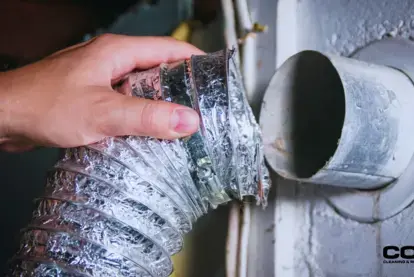
How to Clean Porcelain Tile in Your Home
Contact COIT for a professional cleaning!
Cleaning porcelain tiles not only boosts your home's beauty but also keeps the tiles in top shape for longer. But many homeowners struggle with how to clean these surfaces properly—do they require special cleaning solutions? What’s the best way to dry the tile? Should I just hire a professional?
This guide will show you the best ways to keep your porcelain tiles looking great, from everyday cleaning routines to deeper, more thorough methods.
We’ll cover everything from the simplest daily tasks to tips on tackling stubborn stains and restoring shine, ensuring your floors remain stunning and functional for years to come.
What is Porcelain Tile?
Porcelain tiles are a type of ceramic tile known for their strength, resistance to moisture, and low maintenance.
Made from finer, denser clay and fired at higher temperatures, porcelain tiles are a popular choice for floors, walls, and outdoor areas due to their durability and variety of finishes and designs.
What is the Best Way to Clean Porcelain Tile Floors?
Maintaining porcelain tile floors is simpler than you might think. For regular upkeep, follow these steps to keep your tiles looking new:
Materials Needed:
- Soft broom or a vacuum cleaner with a soft brush attachment
- Microfiber mop
- Mild pH-neutral dish soap
- Warm water
- Bucket
Daily Cleaning Routine:
- Sweep or Vacuum: Begin by removing dirt and debris with a soft broom or a vacuum, ensuring that abrasive particles that can scratch the tiles are removed.
- Mopping: Use a microfiber mop and a solution of warm water mixed with a few drops of pH-neutral dish soap. Wring the mop well to avoid soaking the tiles, which can leave water spots.
- Rinse and Dry: Rinse the mop in clean water, mop the floor again to remove any soap residue, then dry with a clean towel or mop to prevent water spots.
How to Clean Porcelain Shower Tile
Deep cleaning your porcelain shower tiles can help manage soap scum and mildew. These common bathroom issues can make your shower look less appealing and even affect your health.
Here’s a simple step-by-step guide:
Prep Your Cleaning Solution
Mix a solution of 1 part vinegar to 1 part water. This mild acidic mixture is great for breaking down soap residue and mildew without harming the tiles. For tougher grime, consider using a commercially available tile cleaner approved for porcelain, which can offer more cleaning power without risking damage to the tile's glaze.
Apply the Solution
Using a non-abrasive sponge, apply the cleaning solution to the tiles. Let it sit for several minutes to break down the dirt. This soaking period allows the vinegar solution to penetrate and loosen the buildup, making the scrubbing process more effective.
Scrub the Area
Gently scrub the tiles and grout lines with a soft-bristled brush. This will help remove any stubborn stains or buildup without scratching the tile surface. Pay extra attention to grout lines where dirt and mildew can accumulate more heavily.
Rinse Thoroughly
Wash the shower with clean water to remove any remaining cleaner and residue. Ensure that all cleaning solutions are completely washed away, as leftover chemicals can attract more dirt or degrade the tile surface over time.
Dry and Buff
Use a soft, clean cloth to dry and buff the tiles for a shiny finish. Drying the tiles prevents water spots and streaks, while buffing helps bring out the natural shine of the porcelain, leaving your shower looking clean and refreshed.
Contact COIT for a professional cleaning!
What Should You Not Use on Porcelain Tiles?
Certain products and tools can damage the pristine surface of porcelain tiles, leading to dullness, scratches, or even permanent staining. Knowing what to avoid is just as important as knowing how to clean.
Avoid these common cleaning mistakes to keep your porcelain tiles in top condition:
Harsh Chemicals
Avoid bleach, ammonia, or any cleaner that is acidic or highly alkaline, as these can damage the tile’s glaze. Using such chemicals not only affects the appearance by etching the surface but also weakens the tile's integrity over time.
Instead, opt for pH-neutral cleaners that clean effectively without causing harm.
Abrasive Tools
Steel wool or scouring pads can scratch the surface. These abrasive materials can create micro-scratches on the tile, where dirt and bacteria can accumulate, making them harder to clean in the future. It's best to use soft cloths or sponges that can clean effectively without leaving damage.
Oil-based Cleaners
These can leave a residue that attracts more dirt. The oily layer can also make the tiles slippery, posing a safety risk in areas like the bathroom or kitchen.
Instead, use water-based cleaners that provide a thorough clean and dry completely without leaving behind any hazardous films.
How Do You Make Porcelain Tiles Shiny Again?
To restore the shine to your porcelain tiles, consider the following tips:
- Proper Cleaning: Regular cleaning with the right products is key. Use a pH-neutral cleaner designed for porcelain.
- Polishing: After cleaning, apply a porcelain tile polish, following the manufacturer's instructions.
- Buffing: Use a clean, soft cloth to buff the floor in a circular motion to enhance its shine.
Is it OK to Clean Porcelain Tile With Vinegar?
While vinegar is a popular cleaning agent due to its disinfectant properties, its acidic nature can dull the surface of porcelain tiles over time.
Here’s what you should consider if you’re cleaning porcelain tile with vinegar:
- Use Diluted: If opting to use vinegar, always dilute it with water.
- Test First: Try it on a small, inconspicuous area first to ensure it doesn’t damage the finish.
- Rinse Well: After using vinegar, rinse the area thoroughly with clean water to remove any acidic residue.
Professional Cleaning Services
There are times when DIY methods just don’t cut it. Professional cleaning services like COIT can deeply sanitize and restore porcelain tiles without the risk of damage for a pristine finish.
It's a good idea to consider hiring a professional for deep cleaning at least once a year to remove embedded dirt that regular home cleaning can't reach. Additionally, if your tiles remain dull or dirty despite your regular cleaning efforts, it might be time to call in the experts.
COIT’s experienced technicians use specialized equipment and cleaning solutions tailored to the needs of porcelain tiles, enhancing the longevity and beauty of your floors.
Book your cleaning with COIT today.
Preventive Measures and Maintenance Tips
Preserve the beauty of your porcelain tiles with these simple preventive measures:
Use Doormats
Reduce dirt entry by placing doormats at entrances. This simple step helps to catch a lot of the dirt and debris that can be tracked in on shoes, reducing the amount of cleaning needed and protecting your tiles from getting scratched by rough particles.
Furniture Pads
Attach felt pads to the legs of furniture to prevent scratches. This is especially important for heavy furniture that might be moved around, such as chairs and tables in dining areas. Felt pads minimize the risk of gouging or scratching the tiles, keeping them looking smooth and unblemished.
Routine Maintenance
Sweep regularly and clean up spills immediately to prevent stains and scratches. Consistent cleaning not only keeps your tiles looking great but also extends their lifespan by preventing the buildup of grime and debris that can etch into the surface over time. This includes immediately addressing spills to prevent stains from setting into the grout or tile surface.
Final Thoughts
Maintaining the cleanliness and shine of your porcelain tiles doesn't have to be daunting. With the right tools and techniques, you can keep your tiles looking as good as new.
Remember, while DIY cleaning is effective for regular maintenance, sometimes the expertise of professional cleaners like COIT can make a significant difference, especially for deep cleaning needs.
Don't wait for your tiles to lose their luster—contact COIT now and ensure your home or business shines. Schedule your professional cleaning with COIT today!




